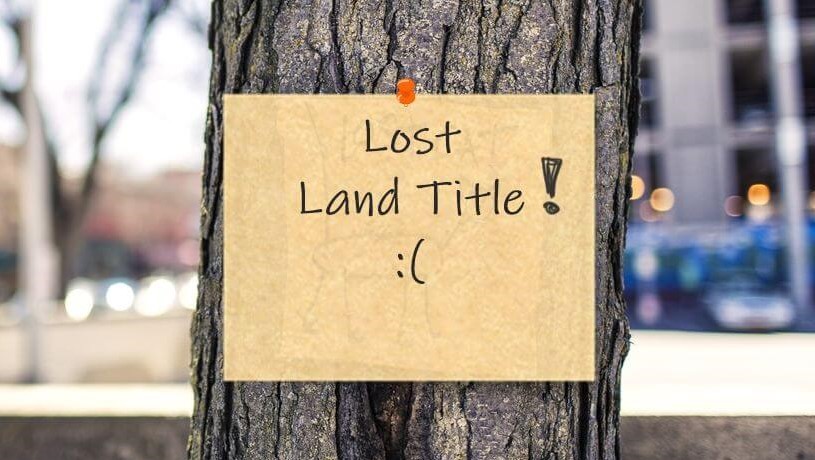
Owning a piece of land is a dream for many individuals and families in the Philippines. It represents security, stability, and a tangible asset that can be passed down to future generations. However, the unfortunate reality is that land title documents can sometimes be lost or damaged due to unforeseen circumstances, leaving landowners in a state of uncertainty. This is where the process of reconstitution of title comes into play – a legal procedure that aims to restore lost or damaged land titles to their original form. In this blog, we’ll delve into the importance of reconstitution, the process involved, and how it benefits landowners.
What is reconstitution of title, and why is it important?
Reconstitution of title is a legal process in the Philippines that aims to restore lost or destroyed land titles to their original form. It is a vital procedure for individuals or entities whose land titles have been damaged or lost due to various reasons, such as natural disasters, fires, or other unforeseen circumstances. The reconstitution process is essential to establish a clear and legal title for the affected properties.
Who can avail of the reconstitution of title?
Any registered owner, his or her assigns, or successors-in-interest can avail of the reconstitution of title if their land title has been lost or damaged. Additionally, the legal heirs or representatives of the registered owner can apply for reconstitution if the owner has passed away.
How is the reconstitution of title different from titling a new property?
Reconstitution of title is distinct from the process of titling a new property. While titling a new property involves obtaining a brand-new land title for an undeclared or unregistered parcel of land, reconstitution aims to restore a lost or damaged title to its original state. Reconstitution is applicable to properties that have already been previously titled but have lost their title documents.
What are the common reasons for the loss or damage of land titles?
Land titles may be lost or damaged due to various factors, including natural calamities like floods, fires, earthquakes, or typhoons. Additionally, titles may be lost through theft, misplacement, or human error in handling and storing title documents.
What is the difference between judicial reconstitution of title and administrative reconstitution of title?
Judicial reconstitution is applicable when the land title has been lost, destroyed, or is otherwise not recoverable through administrative means.
Administrative reconstitution is applicable when the land title has been lost, damaged, or destroyed, but the data concerning the property can still be found in the archives of the LRA.
What are the steps involved in the judicial reconstitution of title?
- Filing of Application: The landowner or their representative must file a petition for judicial reconstitution with the RTC.
- Hearing: The court will conduct hearings and receive evidence to verify the authenticity and existence of the lost or damaged title.
- Publication of Notice: A notice of the petition for judicial reconstitution will be published in a newspaper of general circulation to inform interested parties and protect their rights.
- Court Decision: Once the court is satisfied with the evidence presented, it will issue a decision granting or denying the petition for judicial reconstitution.
- Issuance: If granted, the court will order the issuance of the reconstituted title.[1]
What are the steps involved in the administrative reconstitution of title?
The reconstitution of title process involves the following steps:
- Filing the Application: The property owner or their representative must file an application for reconstitution with the Land Registration Authority (LRA) in the province where the property is located.
- Publication of Notice: A notice of the application will be published in a newspaper of general circulation for two consecutive weeks. This serves to notify the public of the reconstitution proceedings.
- Posting of Notice: A copy of the notice will also be posted on the bulletin board of the municipal or city hall and on the property itself, if feasible.
- Submission of Documents: The applicant must submit supporting documents, such as tax declarations, survey plans, and any other pertinent records, to establish the authenticity of the title.
- Verification and Investigation: The LRA will verify the authenticity of the documents submitted and may conduct an investigation to ascertain the veracity of the application.
- Decision and Issuance: Once all requirements are met and the LRA is satisfied with the application, they will issue a decision to reconstitute the title. The reconstituted title will then be issued to the applicant.[2]
Is the reconstitution of title a lengthy process?
The length of the reconstitution process can vary depending on various factors, such as the completeness of the submitted documents and the complexity of the case. While some cases may be resolved relatively quickly, others may take several months or longer to complete.
Can the reconstituted title be used for transactions and legal purposes?
Yes, once the reconstitution of title process is completed, the reconstituted title will have the same legal effect as the original title. It can be used for various transactions, such as selling, transferring, or mortgaging the property.
How can I start the reconstitution process for my lost or damaged title?
To begin the reconstitution process, you need to visit the Land Registration Authority office in the province where your property is located. Seek assistance from their staff to understand the specific requirements and procedures for reconstitution based on your circumstances.
Conclusion:
Reconstituting a lost or damaged land title is a crucial step in safeguarding your property rights and ensuring the legality of your ownership. If you find yourself in need of reconstitution, it is advisable to seek legal advice and guidance from a qualified attorney to navigate the process successfully. Remember, restoring your title provides peace of mind and allows you to freely exercise your rights as a property owner.
[1] Presidential Decree No. 1529, also known as the Property Registration Decree.
[2] Republic Act No. 6732


